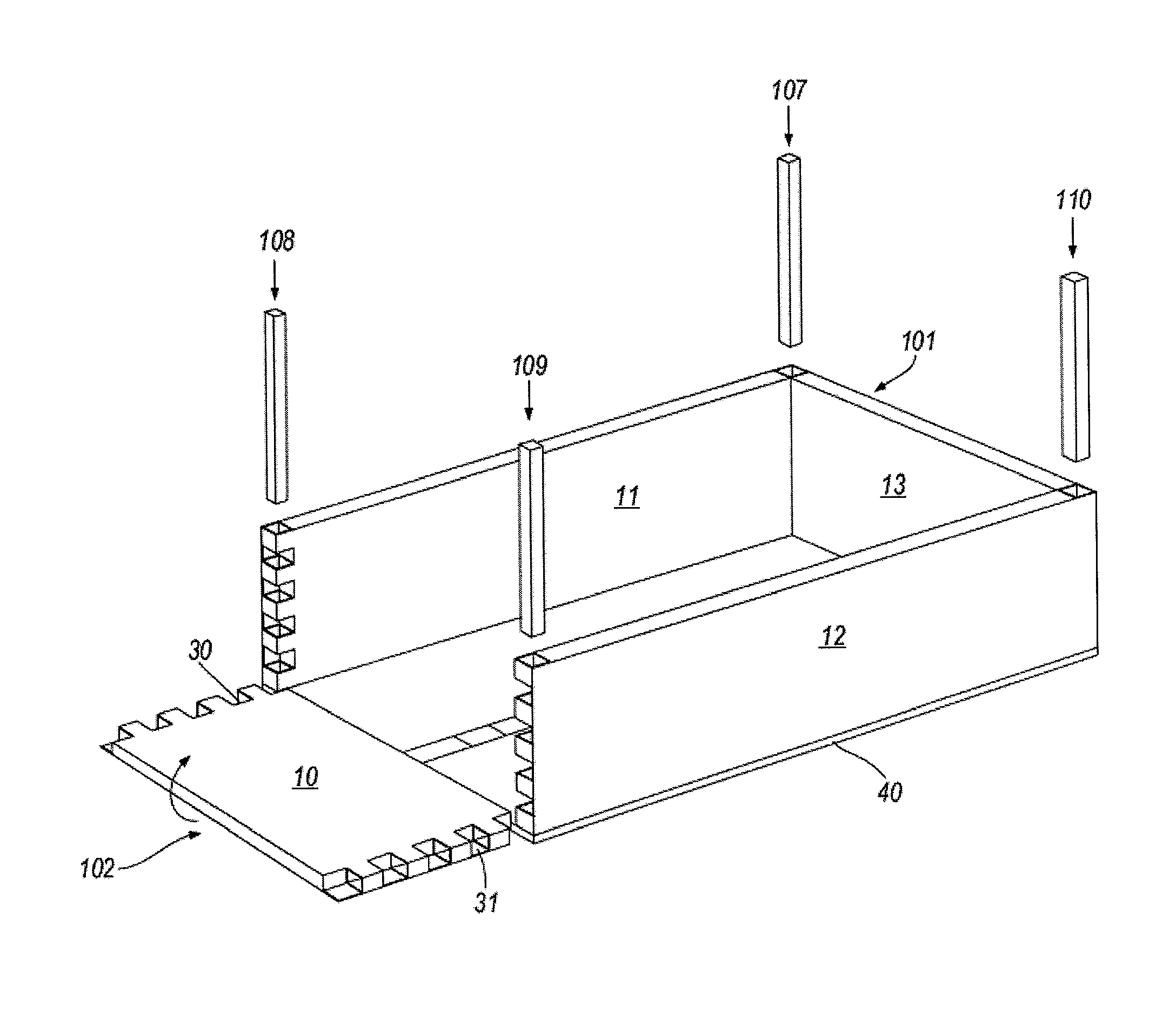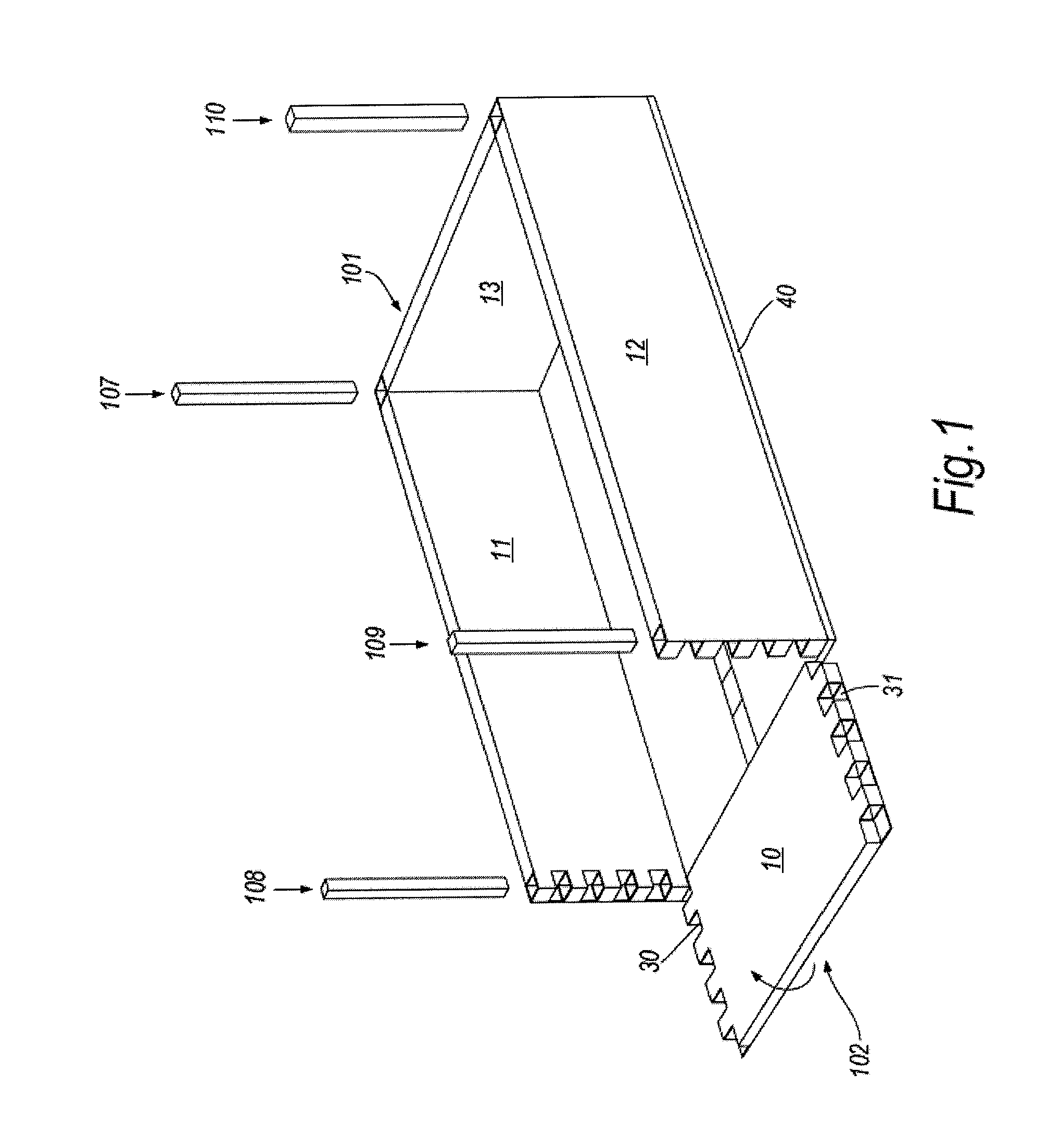Transport Container
a technology for transporting containers and containers, applied in the field of transporting containers, can solve the problems of air transport, difficult positions for transport managers, and damage to goods, and achieve the effect of easy construction, low cost and easy manufacturing
- Summary
- Abstract
- Description
- Claims
- Application Information
AI Technical Summary
Benefits of technology
Problems solved by technology
Method used
Image
Examples
Embodiment Construction
[0038]There will now be described, by way of example only, the best mode contemplated by the inventor for carrying out the present invention. In the following description, numerous specific details are set out in order to provide a complete understanding to the present invention. It will be apparent to those skilled in the art, that the present invention may be put into practice with variations of the specific.
[0039]FIG. 2 shows a first embodiment 20 of the invention in an assembled state. Whilst a base panel is not shown in any detail, outwardly extending the L-section corner sections (to be referred to as L-members hereinafter) 32 depending from the base panel are shown. These L-members are derived from corner guards as used in the packaging industry, (where they are also referred to as V-boards) which are typically retained in place with plastics wrapping film and or polystyrene mouldings about a package.
[0040]The top panels, in this embodiment correspond from an outward perspect...
PUM
| Property | Measurement | Unit |
|---|---|---|
| Temperature | aaaaa | aaaaa |
| Width | aaaaa | aaaaa |
| Content | aaaaa | aaaaa |
Abstract
Description
Claims
Application Information
 Login to View More
Login to View More - R&D
- Intellectual Property
- Life Sciences
- Materials
- Tech Scout
- Unparalleled Data Quality
- Higher Quality Content
- 60% Fewer Hallucinations
Browse by: Latest US Patents, China's latest patents, Technical Efficacy Thesaurus, Application Domain, Technology Topic, Popular Technical Reports.
© 2025 PatSnap. All rights reserved.Legal|Privacy policy|Modern Slavery Act Transparency Statement|Sitemap|About US| Contact US: help@patsnap.com



